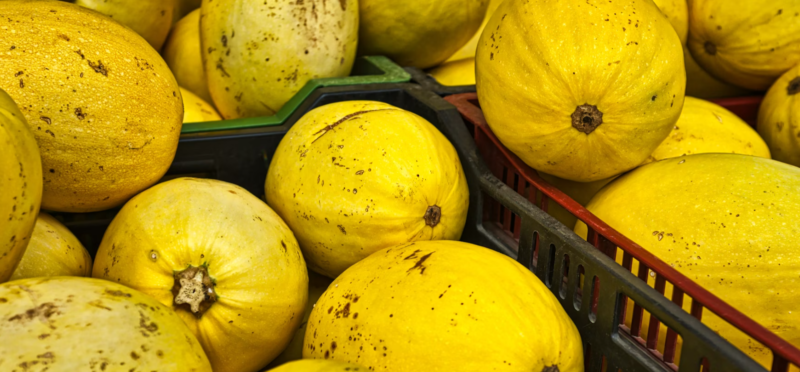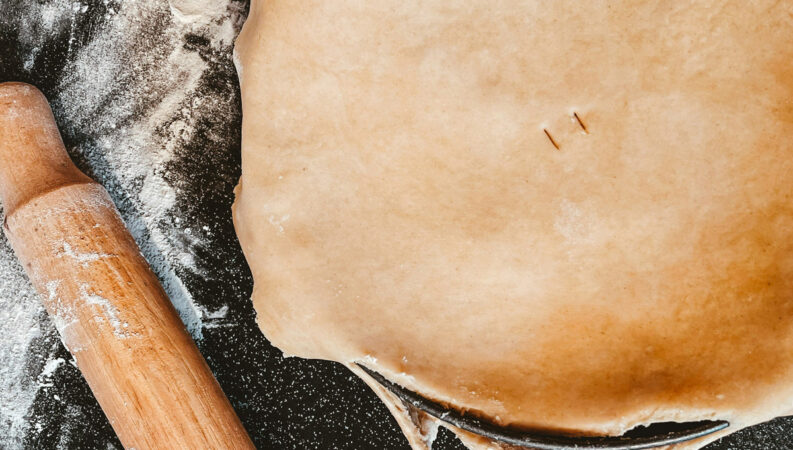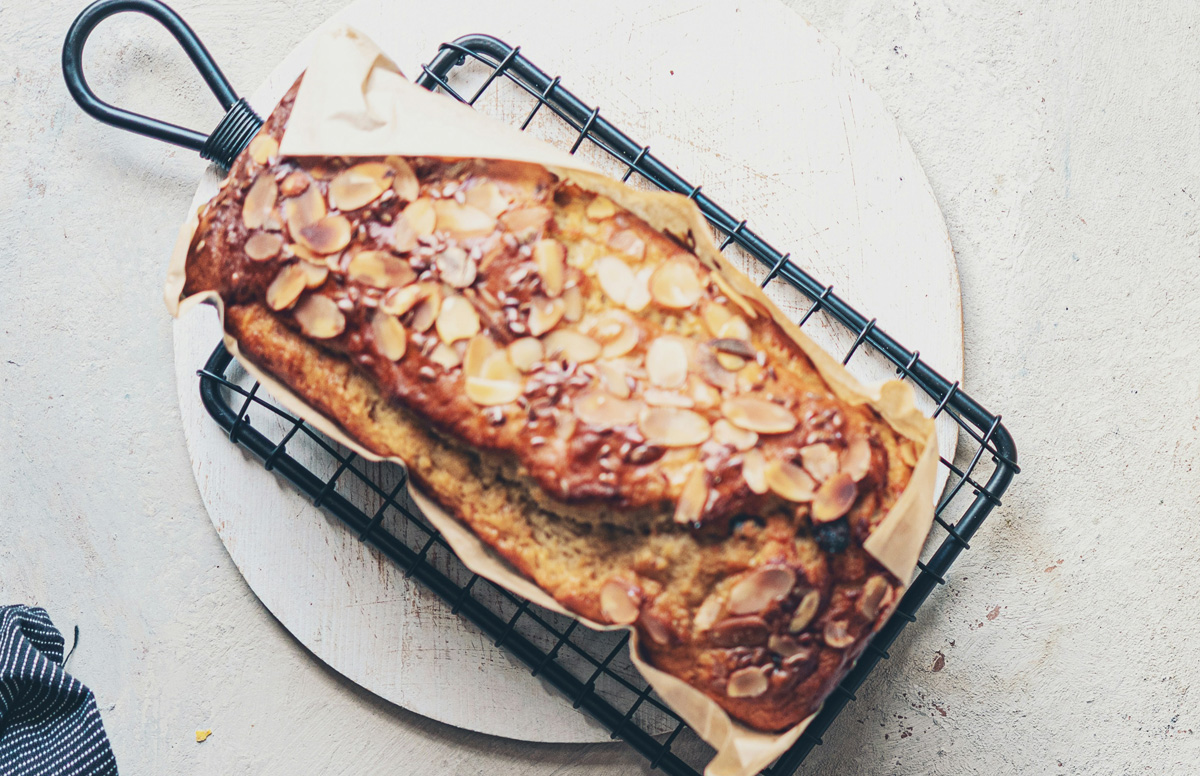
OK, let’s not even talk about the gastronomical crisis that is a Diabetes or Metabolic Syndrome diagnosis. Why oh why is the answer to every question diet and exercise? WHY? Boo. While you’re lamenting the loss of all of your favourite sweet foods, here are a few tips for the diabetic who loves, loves, loves their carbs. I mean carbs are so good. Diabetic sweets are not so great but they can be…acceptable. Here’s your new grocery list for pantry staples if you fancy a little diabetic sweet treat from time to time, but not losing a bloody toe. Get ready to lower your expectations and bake up some sweet diabetic treats that will “have to do”.
The obligatory disclaimer about diabetes
I’m a blogger. Not a doctor. Not even a “health coach” or other bullshyte made up thing. Everyone’s body reacts differently so consult your doctor if you have any concerns. If you rely on the dessert recipes on the Diabetes Australia blog, you’ll be eating… frozen raspberries straight out of the bag and calling it a treat (I mean, it’s not, not a treat but aim ever high). When you get your pantry staple shopping list together, my big tip is that if it sounds too good to be true, it’s too good to be true. “Products” will use every marketing trick in the book to make you buy their stuff – read the labels carefully, there’s a lot of fibbers on your supermarket shelves. Asian grocers, especially have dodgy labelling. Fermented rice means no carbs? NOT TRUE AT ALL. This is a dirty lie. Ask me how I know. Asian grocers seem to carry a lot of dubiously labeled products but also a lot of GOLD for diabetics. If in doubt, eat two teeny tiny bites and then test for spikes. All diabetic desserts are best served in modest sizes after a big old plate of fibre. Yay! Broccoli anyone?
Sharing is for Those “Pancreas-TypicalS”
It’s time to cook for you and your skinny little supply of insulin. The ingredients in your diabetic pantry are painfully expensive compared to regular ingredients and no matter how hard you try to make the perfect diabetic treat, it will never be a glorious sugar-laden wheat fest. So don’t share. Find a few recipes you LOVE and make them all for yourself. Freeze them. Keep them precious so you aren’t forever trying to satisfy your sweet tooth while some “pancreas-typical” moocher is scoffing down your carefully measured diabetic treats. Get a container for your freezer that is “hands off” for the insulin-rich.
Low Carb, Low GI Flour Replacements
Note that low-carb cookery requires more greasery…. Low-carb ingredients tend to stick more than flour and also, burn easier. Watch your temps and use baking paper AND spray oil. Not kidding, sticks like glue.
- Almond flour/almond meal. The only difference is how finely it’s grated. Rich and buttery and perfect for baking…except, it doesn’t bind nor does it rise with yeast. See below for all the stuff you need to actually make it work. Note that blanched almond flour has had the skin removed from the almonds and has been ground extra fine. This is what you’d need if you were attempting light fluffy cakes. If you are successful at that let me know as I have never once achieved a light fluffy diabetic cake.
- Coconut flour. This is the go-to low-carb flour for “moist” cooking. It absorbs a lot more liquids than almond flour so you’ll need to add more liquids to the mix.
- Lower GI/ reduced carb flours. Lower GI flours like rye, spelt, oat, chickpea and similar still have carbs but have more fibre than your tasty, tasty white wheat flour. Sadly, you can’t just swap out your fluffy white bread for brown nor can you hoe into a chickpea loaf. The lowest-carb flours are made of seeds, nuts and apparently, ground crickets. OMG. NOPE. Seed and nut flours are very high in fat. So, if it’s a metabolic syndrome diagnosis you’ve received, these might be a no-go too. Keep in mind that these flours don’t necessarily bind either.
Sugar Replacements for your shopping list
- The bog standards. OK so, sugar replacements have come a long way from the little tube of Hermasetas your gran kept on her bench. Let’s take a moment to thank the Keto crowd for creating a groundswell of interest in “doing better”. The cheap (ish) and cheerful classic fake sugars (including aspartame, acesulfame-K (ace-k), sodium cyclamate, sodium saccharin, sorbitol, etc) have had a fair bit of bad press. Artificial sweeteners have been linked to everything from cancer to well…awkward fartiness. Mostly though, they’re awful. They taste awful. Like adding a metal fork to your tea. No.
- Stevia. This is a plant-derived one and is poisonously expensive. Most of the stevia on supermarket shelves contains very little actual stevia. Fun fact though, you can buy stevia plants. If you’re a fan of gardening, plant yourself a little stevia bush, harvest your leaves, soak in vodka for no more than two days, simmer off the booze, and store in your fridge. Done.
- Monk fruit. The sweetest fruit on the planet according to some dubiously trustworthy websites. That supermarket monk fruit sugar that costs more than your first car? That’s not even monk fruit really. It should really say “may contain traces of monk fruit”. Go to your Asian grocer, go to the Chinese spices section, and grab yourself a dried monk fruit. It looks like a brown tennis ball. Cut it in half, pop it in a litre of water, and simmer with the lid on for two hours. The result? Your own, pure monk fruit syrup. Taste it. HOLY SMOKE is it sweet. So sweet. Like, 4-year-old birthday party sweet. Pour it into ice cube trays and freeze. Bam, a year’s worth of sugar replacement for $4.
- Isomalt and maltitol. These alcohol-derived sugar replacements are the ones you use when you want to make toffees or candies or anything “hard” as they’ve got very a similar texture to actual sugar and don’t absorb water. You can buy them in bulk but frankly, they’re overpriced regardless of where you shop.
- Xylitol. Not gonna lie, this alcohol-based sugar replacement is my favourite. Go to your local IGA or local fruit barn and pick yourself up a 500 gram bag of this for $9. Looks like sugar. Tastes like sugar (you cannot tell it’s not sugar until the mildly weird aftertaste – but in coffee, you’ll never even know) and it works like sugar in baking. It’s a polyol though. That means the body can’t fully absorb it, so…. It makes your gut biome made….making you flatulent.
Thickener and Binder Replacement pantry staples
- Low GI Flours. A tablespoon of low GI flour spread across 10 servings of stew is probably OK. It’s all about the ratios.
- Cauliflower. Surprisingly, you boil that to nothing and it becomes a thickener. Only suitable use for cauliflower in my home.
- Sour cream. Yes, this is a delightful way to thicken things but your doctor may not agree.
- Egg White. Egg white makes a surprisingly good thickener in things like almond pastry crusts. You’d think it would make the texture awful, but frankly, the texture is going to be slightly weird anyway.
- Psyllium Husk. Horrible and gritty, and the active ingredient in constipation medication – but, binds like flour. So if you’re baking with almond flour, you’ll need some to keep your cookies together! Not avoidable. Grab a bag and use two tablespoons per cup of almond flour or watch the cookie crumble.
- Xanthum Gum. Thicken it up, froth it up. Because there are hardly any carbs in your baking, yeast struggles to create those little yeasty farts that turn flour into fluffy bread. Xanthum gum does an….ok job… as fake yeast and a decent job as a thickener.
- Agar. Those tasty little popping pearls that come in that $8 sugary flavoured tea? That’s agar. It binds in a “jelly-lite” kind of way, perfect for chewy cookies, low-fat cheesecake and muddy mud cakes. If it’s not at your local supermarket, try an Asian grocer. Or, use gelatine but be careful. Nothing worse than a jelly-textured cheesecake.
Pasta, noodle and rice replacements

- Supermarket products. So many supermarket products, so little joy. First, your supermarket is the single most expensive place to buy this stuff, so avoid it like the plague. Second, soy pasta from the supermarket is god awful. It’s time to hit the Asian grocer again.
- Konnyaku aka Konjac or Yam Cake. Konnyaku is a Japanese yam fiber commonly eaten all over Japan in chunks, like potato, in jelly desserts or in noodle form. It’s sold as a diet product across Asia but can give you a funny tummy if you eat too much. Here you’ll find it as Konjac Noodles and your supermarket will charge you an arm and leg for it. Don’t. Go to your Asian grocer. There, you’ll find it in blocks of plain (white in colour) or seaweed flavored (grey in colour) fairly cheaply. It’s hard to work with but can be cut into blocks and seasoned to resemble meat or dumplings or desserts or whatever you dream of. Seriously, wonder food. Zero carbs. Seven calories. It’s pure unadulterated fibre. You’ll also find a selection of noodles at a tenth of the price of your supermarket. These can be used as spaghetti or noodles and they’re remarkably like the real thing. Like, my kid couldn’t tell. A note though, it smells weird. When you open the pack, tip it straight into water and rinse it thoroughly, then, put it in a bowl of water in the fridge to get rid of the smell. Don’t let the smell put you off, this is a wonder food for diabetics.
- Soy pasta, gnocchi and dumplings. Textured soy isn’t just tofu. In fact, tofu is the only thing that really made it big here in Australia but if you were to eat out at a fancy place in Thailand, you’d get “melt in your mouth” soy dumplings that you will talk about in diabetic cooking blogs twenty years later. They’re so good. Textured soy noodles and dumplings are in the fridge at your Asian grocer, probably near the konjac noodles.
- Cauliflower rice. Look, simmer lightly in some stock and blend it until it looks like rice and judge for yourself. It’s a diabetic staple, so you may as well give it a shot.
- Zucchini pasta. No.
- Spaghetti Squash. Well, well, well why have we not had this in our shopping cart for decades? Cut it in half lengthways, pull out the seeds, bake it in the oven, shred with a fork and bam, delightful angel hair spaghetti good to go with your favourite sauce. So good. So easy. But only available at select greengrocers and only in spring and early summer. It freezes but is better fresh.
Flavourings, Milks and Syrup Replacements
- Zero sugar hot chocolate mix. The Aldi one is…fine. They’re all….fine. The problem is that unsweetened cocoa is really bitter and you need far too much sweetener to make something that’s not TERRIBLE. So, if you’re making something chocolatey, use a low-carb hot chocolate mix instead of cocoa.
- Almond milk. Fake milks are generally horrible, like clag glue or gritty and foul. Almond milk is the best of the bad bunch if you’re worried about carbs in dairy.
- Lactose free milk. Lactose free milk has the same amount of carbs, fats and proteins as regular milk, only the sugars in lactose-free milk are much, much sweeter than regular milk, so you can use less in baking sweet goods.
- No Sugar Up and Go. These make surprisingly good, lower-carb (note, they still have carbs, more than you’d expect) custard bases or “milk replacements” – add egg yolks to thicken, bam nutrition packed chocolate custard. Who knew?
- No sugar protein powders. Sure, these are nutritionally dense and very low GI but man do most of them taste like the bottom of a bird cage. Cannot recommend one in particular because yuck. Note that products like Optifast, designed for medically managed rapid weight loss, are there to replace all your meals. So each one has 1/3 of a day’s carbs in it. This is not for you unless your doctor tells you to do it.
- Surkin Syrup. Not cheap, has carbs, but is low GI. Replaces pouring syrups and can be used to make sugar free caramel.
- Werther’s Sugar Free Hard Caramels and Chocolate Caramels. These little puppies are the BEST sugar fix and diabetes diabetes-friendly (note, if you eat too many you’ll feel some regret, while perched on the loo). They can be “blended up” to create a crunchy caramel-flavoured topping or additive. But you know, it’s an expensive way to do things.
- Diabetic Chocolate. Look, it is what it is. It doesn’t melt very well and the darker the chocolate the less horrible the flavour. As you bite into it, think off all the good you’re doing for your wound-free toes. THINK OF THE TOES. Dark chocolate with mint is acceptable. These are good for grating over diabetic desserts to give them a sweet kick so keep a couple in the pantry for baking days.
- Keto Chocolate. This is a different kettle of fish. Keto chocolate uses fats to compensate for lack of deliciousness whereas diabetic chocolates tend to be flavourless hard hockey pucks. Some keto chocolates will melt. Look for ones with high-fat content to melt into your cooking. For snacking, may I recommend Vitawerx white chocolate with raspberry and macadamia? For treats in moderation and all that.
- Berries. All the berries in all the things. Have you ever had raspberries baked in a modest amount of cheesecake mix? No, then you haven’t lived. Live a little.
Now to use your diabetic pantry staples…

If there’s one thing I can advise here, don’t follow a single recipe you see on Facebook Reels or TikTok. It’s all lies. All of it. Ask in diabetic chat groups and forums for recipes that are worth baking. Keep in mind too that Americans cups are 100 grams, not 250 grams so if you use American recipes, they’re going to come out weird. I’ve made a whole lot of fail diabetic sweets recipes but I’m a bit of a cooking enthusiast, so I have persisted. Of all the recipes I’ve tried, the best one for newbies to learn how to use their fun new ingredients would be this… base for lots of different good stuff:
Numpty-proof sweet Dough for Diabetics
This is, in my experience, and after approximately 427 FAILED doughs, the best base dough for diabetic treats. This is all the stuff it takes to replace 2 cups of self-raising flour. What a drama! But, once you have it, it can be ‘repurposed” into a bunch of diabetic-friendly baked goods. You can skip the faux sugar and use it for savoury stuff too.
Ingredients
- 1 cup almond flour (250 grams, an Aussie cup, not a US cup)
- ½ cup coconut flour
- 2 tbs psyllium husk
- 1 tbs xanthan gum
- 2 egg whites
- 2 tsp agar
- 2 tsp salt
- 2 tsp baking powder
- 2 tbs apple cider vinegar
- ½ cup xylitol (or monk fruit syrup or whatever you’re using)
- Water as needed
Method
- Mix all dry ingredients
- Add egg whites and mix
- Add vinegar and liquids to form a sticky dough
- Roll in any “add ins” like nuts or diabetic chocolate
- There’s no gluten in this recipe so there’s no need to knead.
- Wrap in glad wrap and keep in the fridge until ready to use.
You now have a “baking base” which you can turn into cookies with a bit of peanut butter and some grated diabetic chocolate or nuts, or whatever you fancy. You can add butter to make a baked cheesecake base. Add cinnamon or nutmeg to make a fruit pie base. You can leave out the xylitol and use it for a savory pie crust or “pizza base” or add some water and make flat bread. Note that as a pastry, it’s pretty fiddly to get thin enough to use without breaking it. AND, it’s sticky. I roll mine out IN THE ACTUAL DISH to keep it together.
But, this can’t be as good as it gets?
Have you ever been to a five-star vegan restaurant? I have. The food came out on wee little plates and there were three artistically arranged bites of…. spiced vegetables. The vegans at the table were so excited. They were making pleasure sounds and giggling with delight. They were good. The chef clearly knew how to use herbs and spices. They would have been great served next to a big old steak. Over time, like a vegan, your expectations will lower. Your thirst for sugar and carbs, will lower. Your “acceptable” sweetness level will lower. Lowered expectations are key here. I’m not going to lie. I’m not going to sugarcoat it (boom tish) stock up your diabetic pantry and start playing with recipes until you find some that are “good” and accept that good is the new great.
New to Diabetes? Here’s some other stuff you might like, including what you should know about your first trip to a podiatrist.




